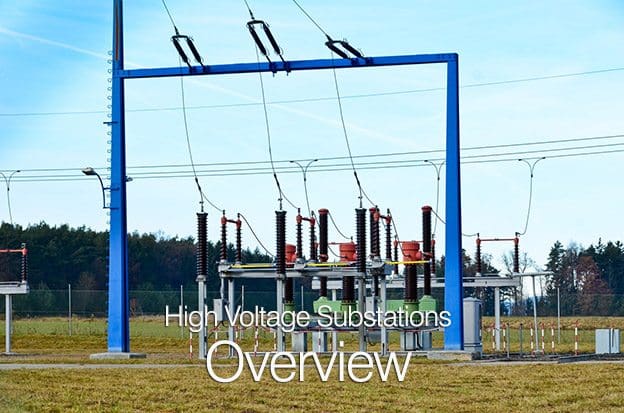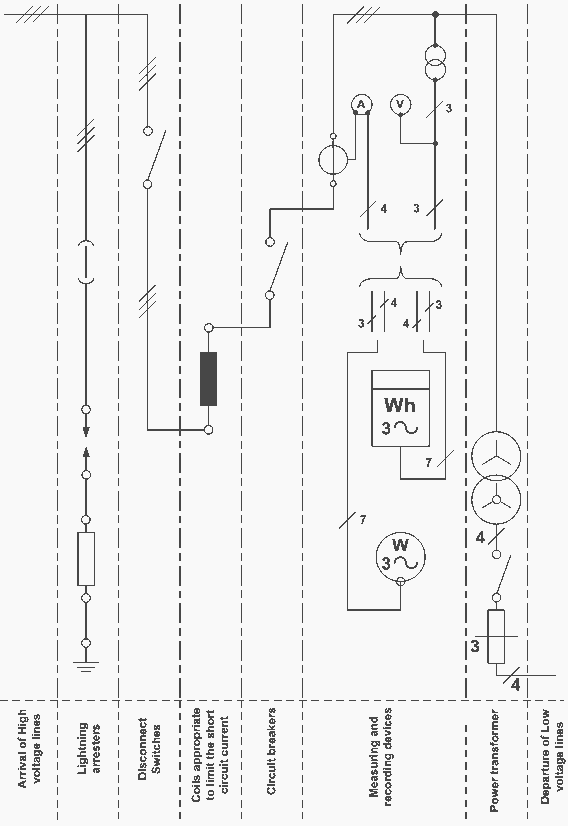
Continued from first part: High Voltage Substations Overview (part 1)
Distribution Substations
Transformers are used for the transformation of high and medium voltage to low voltage, flanked by specific protective devices and control systems, which constitute the low voltage distribution substations.
A distribution substation, is characterized by the apparent power of the transformer and whether it is aerial, terrestrial or underground.
The indoor substations (terrestrial or underground), are manufactured in specific areas to ensure waterproofing and adequate ventilation. Among the equipment of high and low voltage, special protective grids (cells) shall be inserted and the transformer is protected by a special cover.
The arrival and departure of electric lines may be:
- Aerial (with bare conductors) or
- Underground (with reinforced cables)
The following example refers to a terrestrial distribution station:
1. Floor plan and incision of a terrestrial distribution substation


2. Single line schematic arrangement

3. Analytical (three-pole) schematic diagram

High Voltage Substation At Rockville Indiana (VIDEO)
http://www.youtube.com/watch?v=KeTBWFOYjC8&w=624&h=468
Cant see this video? Click here to watch it on Youtube.
References:
– SIEMENS Substations Guide
– Andreas Goutis, ‘Electrical drawing, Part 1’











A Very nice and useful portal, thank you very much.
TANKS
please gives me some idea 1) on_load taping
2) off_load taping
which is used in grid station……..????
Same as the name shows ;-)
ON LOAD means raise/lower transformer output voltage at a substation without switching off(ON-LOAD) the feeder.
OFF-LOAD means raise/lower transformer output voltage at a substation after switching off(OFF-LOAD) the feeder.
The second one is safe. So it is recommended my the transformer manufacturers.
i have one question………please answer this…..
Why potential transformers are installed before current transformer in a structure of switching yard?
There is no regulation for the connection of the transformers. You connect them in any order you wish…